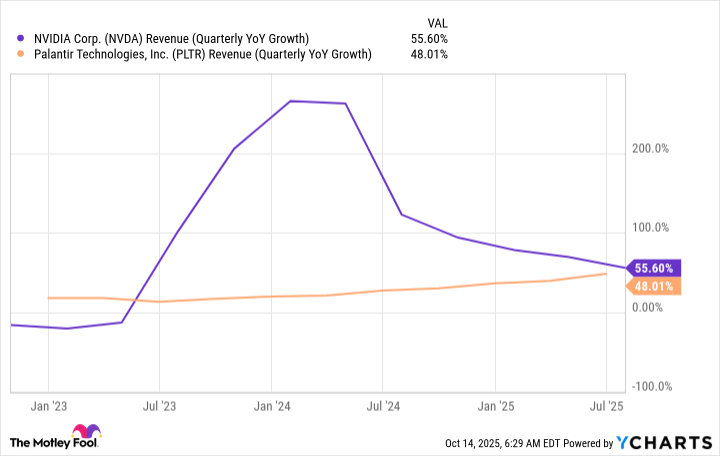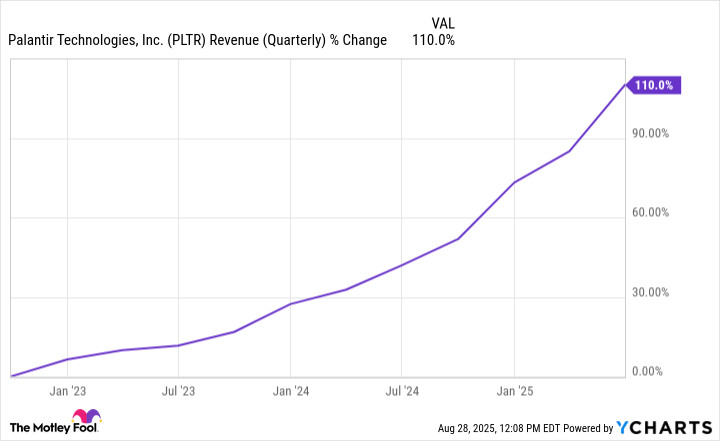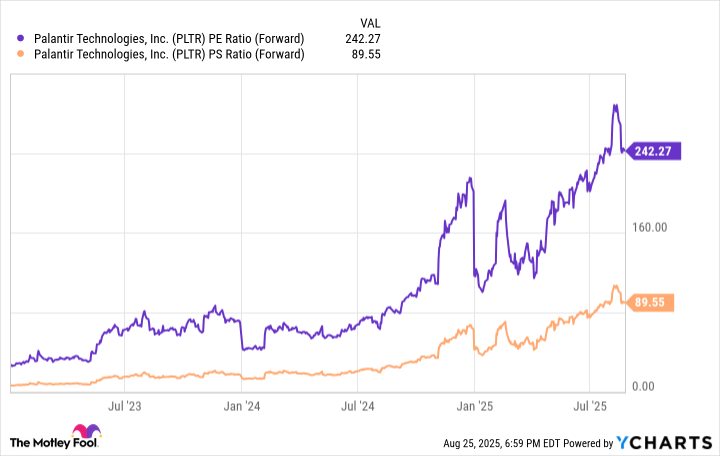Palantir Technologies (PLTR +0.01%) has arguably been the biggest winner of the artificial intelligence (AI) boom over the past three years. Its AI-driven platforms offer incredible benefits for users, and it operates in a niche space with sticky business.
There’s no question that performance is strong and the runway is long. However, having climbed nearly 2,000% over the past three years, Palantir stock has become obscenely expensive. It trades at a price-to-sales ratio of 118 and a forward one-year P/E ratio of 256. Given the high opportunity but rich price, is Palantir stock a smart buy today?

Image source: Getty Images.
Why Wall Street is wild over Palantir
Given its niche area of operation, it’s somewhat surprising that Palantir has become one of the most popular stocks to follow. It’s not like AI giants Nvidia and Amazon, both of which play a central role in the general development of AI as a global phenomenon.
But it’s exactly the niche aspect of Palantir that makes it so enticing today. It offers a product that can manage pain points for large organizations, and the specialized platform means there isn’t a lot of competition in this space.
Palantir uses AI for data collection and organization, transforming how companies process their data and leading to quick and clear action. It brings disparate systems together, unifying data across one central control board and allowing managers to detect patterns that would otherwise have taken much more time and manpower.
The company has several products geared to different types of organizations, and its U.S. commercial business is its core product today, increasing 93% year over year in the second quarter.
Total revenue was up 68% over last year to $733 million, and government revenue increased 53%.
Today’s Change
(0.01%) $1.30
Current Price
$158.02
Key Data Points
Market Cap
$375B
Day’s Range
$153.09 – $158.23
52wk Range
$29.31 – $190.00
Volume
2.1M
Avg Vol
77M
Gross Margin
80.03%
Dividend Yield
N/A
The company closed $2.27 billion worth of contract value in the second quarter, up 140% from last year, with 42 contracts worth $10 million or more. Customer count was up 43%.
There are vast opportunities for Palantir to change company processes in many categories, automating systems and accelerating the pace of business.
Beyond its high growth, Palantir has many features that stand out. One is its long-term contracts, creating a “sticky” environment and a recurring revenue stream. The high contract value means money will be flowing into Palantir’s coffers for years, and they’re lucrative: the company scored 157 new contracts of at least $1 million in the second quarter. With the increases in customer count, value will continue to increase, setting Palantir up for many years of growth.
It’s also extremely profitable, with $567 million in free cash flow at a 57% margin in the second quarter and operating income that more than doubled as well as a 27% margin.
Is Palantir stock a smart buy today?
It’s not just Palantir stock that’s expensive. The market looks frothy all over, and inflated valuations are a setup for some sort of correction. However, Palantir stock stands out for its sky-high valuation.
Palantir stock has been expensive for a while, and it keeps rising anyway. The opportunity is enormous, and the company has a strong moat in its exclusive technology and algorithms that have been developed over years. Plus, it has long-term contracts with established clients, including the U.S. defense industry. That’s why investors are paying a premium for this stock.
If you have some appetite for risk and a long time horizon, you might want to buy Palantir stock with a dollar-cost averaging strategy. That allows you to benefit from buying at different price points instead of investing at what could end up being a high.


























